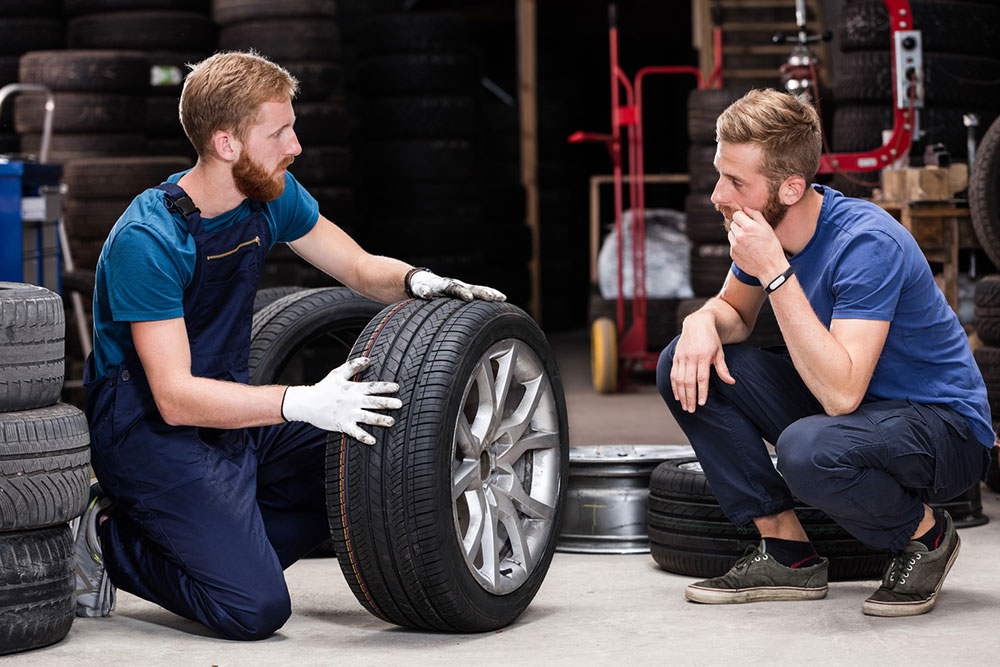7 common mistakes to avoid when purchasing tires

Tires are a huge part of a vehicle’s structure. Selecting the correct set of tires is crucial for a vehicle’s performance and longevity. This is why buyers must be watchful and careful while purchasing tires. Mistakes are common when one buys tires for their vehicles. Knowing the mistakes makes it easier for people to avoid them while buying tires online or offline. Here are some of the most common purchasing mistakes buyers make:
1. Choosing incompatible tires
Tires come in various specs, many of which may not be compatible with the buyer’s given car model. This is why one needs to know the exact specs of their vehicle before stepping into a tire store. All one needs to do is check their vehicle’s owner’s manual, which contains all the details about the best tire brands and a guide on what size and type of tires can be used for the given vehicle. Also, vehicle owners can check the tire placard for exact details. This placard is normally placed near a vehicle’s driver’s side door.
2. Buying inferior tires
Nobody purchases “bad” tires for their vehicle on purpose. But sometimes, people may unknowingly buy tires that are inferior in terms of quality. This happens when buyers simply do not know better about a brand or model before putting their money on a set of tires. Only after they experience the ill effects of bad tires do they realize that their product is tangibly inferior to the others on the market. Therefore, doing a bit of research is critical before purchasing tires. Before heading to an auto store, buyers can check online comparisons or take the opinion of friends and relatives to know which tires are simply the best for their vehicle.
3. Purchasing the wrong size
Buying the incorrect size tends to be the most common of all the mistakes buyers make while purchasing tires. On many occasions, buyers may be able to purchase tires with specs that are near enough in terms of compatibility but are either too big or too small for their vehicle’s wheel well. This is why one needs to check the sizes on the side of a tire package before buying it. To get rid of this issue, buyers can also hire professionals to do this task for them.
4. Not knowing what one wants from their tire
It may be harder to buy a tire when buyers are not aware of exactly what they expect from their tires. Knowing what one wants ahead of time is critical, as different kinds of tires are made in radically different ways, with added features depending on factors like the vehicle’s normal speed, the tread required, ride quality requirements, and similar other factors. Certain buyers need more traction from their tires, as they tend to drive their vehicles quickly around tight corners. Some buyers may want their tires to offer a plush ride quality, while others may need a neat balance between the two. Once a given buyer knows exactly what they want, buying the “perfect” tire is easier.
5. Not buying tires with enough load index rating
A tire’s load index rating is a scale that determines how much one’s tires can hold before metaphorically “crumbling into themselves,” exploding, or just getting damaged and becoming unusable after a while. Tires generally tend to come with figures that read like this: 185/65R15 88H (24.5”).
The load index number here is just before the speed rating letter H. The number 88 tends to correspond in the load index chart to about 1,235 pounds, meaning that a single tire can take that much weight before crumbling into itself. For four tires, that number will be 1,235 times 4, which is 4,940 pounds. Getting one’s tires changed by professionals is advisable, as they have the perfect knowledge of whether a given vehicle’s tire’s load index rating should be higher or lower. If one changes their tires by themselves, being mindful of this detail can be useful for their vehicle in the long run.
6. Buying tires for the wrong season
Certain tires are built for specific seasons. For instance, some tires may be explicitly engineered for freezing climates, others offer greater off-road grip during the rains, and some offer the greatest grip on dusty terrain. A one-stop solution to this issue is simply purchasing tires with an “all-season” sticker. However, such tires tend to be on the higher end of the price spectrum.
Therefore, it is wise to buy winter tires if the vehicle is driven in zones with snow throughout the year. Keeping the winter tires on during the regular season can be a mistake, as the tires will run down their tread faster if they are meant for snow but are hitting regular tarmac and pavement all summer. This is why one can switch to summer tires when the right season arrives.
7. Changing tires for no reason
This may seem like the most obvious piece of advice, but it is still useful as many vehicle owners change their tires even when their older ones clearly have some mileage left in them.
There will be clear occasions (a trek, an off-roading session, driving around a racetrack) requiring tire changes, but owners will waste too much money if they buy brand-new tires when they do not actually “need” them. Essentially, suppose a tire’s tread is deep enough. In that case, its ride quality is smooth and supple enough, and its grip around medium to tight corners is passable enough that vehicle owners do not need a new set of tires, at least not at the moment.
Some of the other mistakes are not considering the driving conditions before picking tires and compromising quality for price while buying.